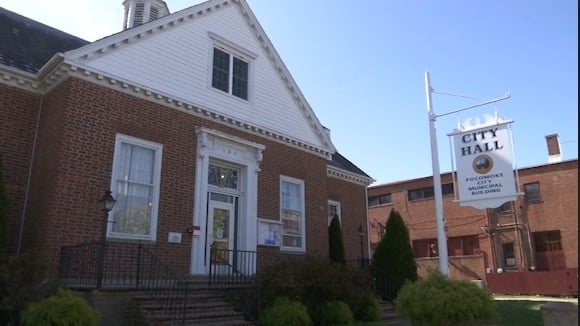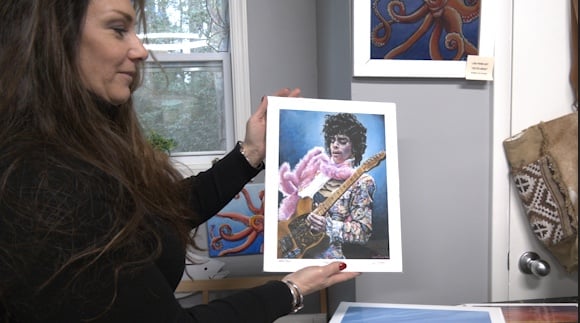American Lung Association releases annual State of the Air report
DELMARVA – The American Lung Association (ALA) releasing its annual State of the Air report. While air quality here on the Eastern Shore of Maryland and in Sussex County, Delaware are relatively good, other parts of the region saw poor grades. But, that doesn’t mean that it shouldn’t be a concern locally, says the ALA, health care providers, and lung patients.
State of the Air
The ALA assigns letter grades on three different measures: ozone levels, 24-hour particle pollution, and annual particle pollution. “We did see some decreases in ozone. But, we saw some increases, for example, in 24 hour particle pollution,” said ALA Director of Advocacy for Delaware, Maryland, Virginia, and Washington, D.C. Aleks Casper.
According to the report, 120 million Americans live in communities with unhealthy air. At-risk populations for poor air quality include children under 18, adults 65 and older, pediatric and adult asthma, COPD, lung cancer, cardiovascular disease patients, pregnant people, and those living in poverty.
Dorchester County saw a “C” grade for its ozone levels, an “A” grade for its 24-hour particle pollution, and a “Pass” for its annual particle pollution. Its population is 32,489 people. Of those people, 25,799 are considered at-risk for poor air quality, and 12,300 are people of color.
Sussex County received an “A” grade for both ozone levels and 24hour particle pollution, and an incomplete grade for annual particle pollution. Its population is 247,527 people. Of those people, 210,274 are considered at-risk for poor air quality, and 60,853 are people of color.
And, Kent County got a “B” grade for its ozone levels, an “A” grade for its 24-hour particle pollution, and an incomplete grade for annual particle pollution. Its population is 184,149 people. Of those people, 138,150 are considered at-risk for poor air quality, and 75,860 are people of color.
Poor Air Quality, Poor Health
The ALA and doctors say poor air quality can result from pollution from factory and vehicle emissions; transportation, in particular, is the leading cause. Particulate matter is 2.5 microns in diameter; in other words, 1/30th of the width of a strand of human hair. Small they may be, the particles can have large, and serious health impacts.
High exposure to particulate matter in the air can cause increased risk for asthma, COPD, heart attack, pre-mature birth, lung cancer, and eventually death. Being exposed to high levels of ozone is more of an irritant. Dr. Christy Sadreameli says it’s like having a sunburn on the inside of your lungs.
“Something that small goes down really deep into the lungs, and it penetrates into the lungs very well,” said Dr. Sadreameli.
Dr. Sadreameli says on hot days, ozone creation can be accelerated, and her patients frequently report worsening symptoms. “I have started advising patients to check the air quality that day, and to be aware, to form that link in their mind that a very hot day might be a risky day for them to be outside,” she said.
Katja Fort Rhoden’s son is one of Dr. Sadreameli’s lung disease patients. Katja, herself, understands what it’s like to struggle on poor air quality days herself, as a double lung transplant recipient.
“I cannot, physically, exercise or walk or be outside on poor air quality days,” said Katja. “On bad air quality days, it feels like having early lung disease. A good air quality day, you’re walking on pavement. Poor air quality day, imagine you are literally spending the whole day walking in sand; the labored breathing, headaches.”
Environmental Equity
Of the 120 million Americans living in unhealthy air, 64 million are people of color. And, of those 64 million, 64% are more likely than their white counterparts to live in a county with at least one failing grade; they are 3.7 times more likely to live in a county with failing grades for all three measures.
The ALA, Dr. Sadreameli, and Katja all say that socioeconomic status can put people at higher risk; people of color, those living in poverty, and those living in close proximity to factories and major roadways.
“About 54% of the people impacted are people of color, and that’s before you even bring disease into it,” said Dr. Sadreameli.
Dr. Sadreameli says we might not even be getting the full picture of how disproportionate these impacts may actually be. “There are some areas that don’t report. So, it’s more than 120 million people who live in an area of unhealthy air,” she said.
Katja says she feels the disproportionate impacts, herself.
“It’s a constant thought in my mind,” said Katja. “I’m biracial, I’m the mother of a Black child. I feel kind of like the anvil in these types of experiences. People who are at a socioeconomic disadvantage have a higher rate of asthma and lung disease.”
“They don’t want to live our lives.”
While Katja lives across the Bay Bridge in Howard County, she says Eastern Shore and Delaware residents shouldn’t take their relatively good air quality for granted.
“The benefit of coastal living is cleaner air. But, if we don’t look at the whole system of water and the earth, people are going to be pushed more inland,” said Katja. “What we are experiencing could be the future for a majority of people, or all people, if we don’t attend to it.”
Dr. Sadreameli says even the poor air quality created by wildfires as far away as California can be carried on the winds to Delmarva. And closer to home, industry and travel are still posing a threat.
“Of course, something from Baltimore, Washington, really close to you, can reach you,” said Dr. Sadreameli. “We don’t want to only give a negative message. But, it is a message of caution for, really, the whole country, even if you’re living in a fairly ‘cleaner’ area on certain measures.”
Katja has this message for those living on Delmarva:
“These are abstract ideas that squarely impact the quality of life of my son and I,” said Katja. “Why should people care about this? Because, they don’t want to live our lives. They don’t want to develop lung disease.”
Looking Ahead, Get Involved
The most recent State of the Air report is only a “snapshot” of the bigger picture, says Casper. “We don’t know what the report will continue to look like in the future. So, we have to continue to take those steps to continue to maintain the ‘A,'” she said.
Casper says the data collected and presented this year, will help advocates and lawmakers determine the best steps forward to improve air quality for everyone.
“We continue to have to make strong decisions to support policies, both at the federal and state level, to move forward and try to continue to protect the progress that we have made,” said Casper.
And, there are things that individuals can do, says Casper, to play their part; consider walking, biking, or taking public transportation instead of driving, buy a zero-emissions vehicle if you can afford it, and be conscientious about regularly checking air quality in your area.
“It’s just kind of being aware of those things, on top of the decisions and policy pieces of the equation. There’s a piece that everybody can be involved in,” said Casper.

